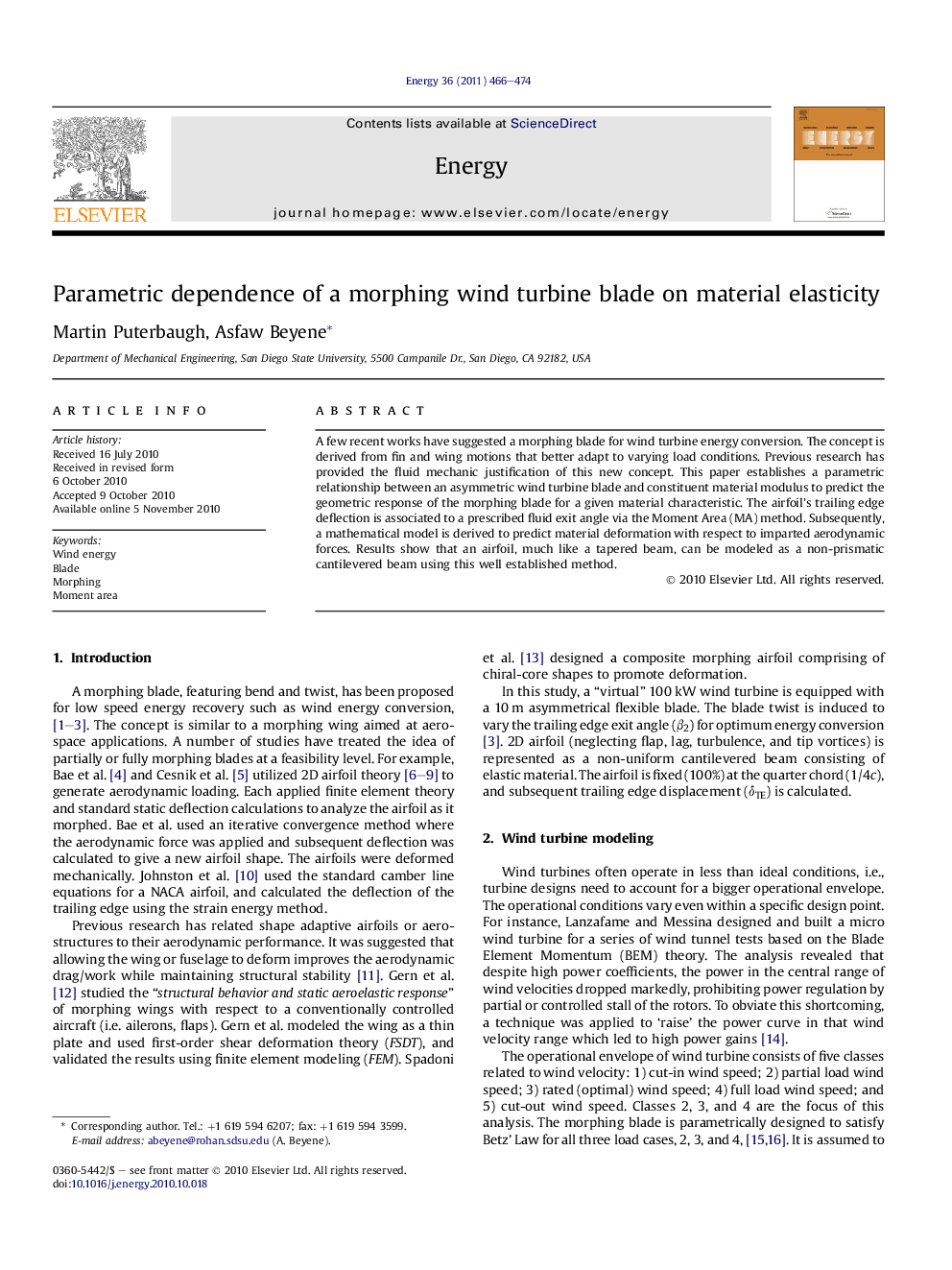| Article ID | Journal | Published Year | Pages | File Type |
|---|---|---|---|---|
| 1734781 | Energy | 2011 | 9 Pages |
A few recent works have suggested a morphing blade for wind turbine energy conversion. The concept is derived from fin and wing motions that better adapt to varying load conditions. Previous research has provided the fluid mechanic justification of this new concept. This paper establishes a parametric relationship between an asymmetric wind turbine blade and constituent material modulus to predict the geometric response of the morphing blade for a given material characteristic. The airfoil’s trailing edge deflection is associated to a prescribed fluid exit angle via the Moment Area (MA) method. Subsequently, a mathematical model is derived to predict material deformation with respect to imparted aerodynamic forces. Results show that an airfoil, much like a tapered beam, can be modeled as a non-prismatic cantilevered beam using this well established method.
Research highlights►A mathematical model relating morphing airfoil thickness and elastic modulus was established. ►For non-prismatic beam under a uniform distributive load, the slope and deflection of the airfoil’s trailing edge were related to the fluid exit angle. ►The main driver of blade deformation was the angular drag force. The Moment Area method was used, verified by Finite Element method. ►Displacement to the exit angle is predicated upon the elastic modulus value given that other parameters are constant. ►Optimum power output is obtained in part load conditions when the blade deforms to the applicable exit angle.
